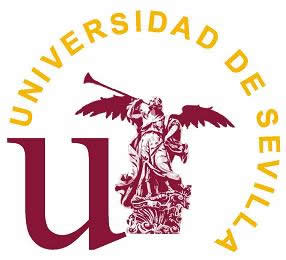Overview
In the non destructive analysis of painting the study of the fabric of the canvas is of major importance. This analysis leads to interesting conclusions both on the conservation of the painting and on the relation of the painting to other pieces, usually from the same author. In old canvas we cannot, in most cases, use the back of the canvas, as it has been probably relined: a second cloth has been added to strengthen it. An X-ray is of help here, because prior to painting, a primer is applied on the fabric, making threads opaque to the X-ray. Furthermore, this primer acts as a glue, and areas where tension was applied remains tensioned even after the canvas is re-stretched. Hence, in areas near nails in the first stretcher bars used, we expect to observe a cusping effect. In this scenario, the characterization of the fabric for comparison purposes can be performed by simply counting the number of vertical and horizontal threads per centimeter. This is a tedious task that has been recently automated by Johnson et al, using Fourier transform.
We have programmed it, in a software, and are at present testing it at the Museo Nacional del Prado with painting from the 16-17th century: Rubens, Fernández Labrador, Van Dick,… As a second objective, apart from avoiding a manual task, is to provide museums with a reliable, repeatable and reproducible procedure, allowing for a protocol to be defined across painting restoration centers.
While most of the analysis reported results on plain-wave fabrics (tafetán), we found other types of canvases in this time period that need to be described, e.g. canvases by El Greco or Murillo. This is a current line of research.
Impact
The Aracne software tool has been used in the following studies
- Rubens in Madrid (1628-29): New Technical Evidence concerning his Copies after Titian and a New Portrait., Boletín del Museo del Prado, Tomo XXXI, N. 49.pp 28-33. 2013.
- Juan Fernández Labrador, Miguel de Pret y la “construcción” de la naturaleza muerta. Boletín del Museo del Prado, Tomo XXXI, N. 49, pp. 34-63. 2013.
- “Sofonisba Anguissola en el Museo del Prado. Una aproximación a su técnica”, Historia de dos pintoras: Sofonisba Anguissola y Lavinia Fontana, Madrid, Museo Nacional del Prado, 2019. (Citado el software Aracne en nota 3)
- “La elaboración en dos etapas del Meleagro y Atalanta de Jacob Jordaens en el Museo del Prado. Consideraciones técnicas”, Boletín del Museo del Prado, Núm 53, 2017 pp. 76-82. (citado el software Aracne en nota 6)
- “El estudio de los soportes textiles a través de la radiografía. Los soportes españoles del siglo XVII”, Kermes 111-112, pp. 143-149. (Citado nota 15)
Involved Members
Juan J. Murillo-Fuentes, Francisco Simois Tirado, Irene Fondón García, Pablo Aguilera Bonet.
Publications
Journals
- Francisco J. Simois, Juan José Murillo-Fuentes, (2017) “On the power spectral density applied to the analysis of old canvases”, Signal Processing, 2017, ISSN 0165-1684. Paper in Signal Processing or arxiv.org.
Book chapters
- J.J. Murillo-Fuentes, L. Alba. (2018). Thread Counting in X-Rays of Plain-Weave Painting Canvas Advanced Characterization Techniques, Diagnostic Tools and Evaluation Methods in Heritage Science. Springer. pp.91-105. Link
Conferences
- L. Alba Carcelén, J.J. Murillo Fuentes (2018) “Los tejidos como soporte de las pinturas: nuevas herramientas para su estudio”. Sesión plenaria en Congreso. La ciencia y el arte. Madrid (Museo del Prado). 2018.
- Fondón-García, F. J. Simois y J. J. Murillo-Fuentes (2014), “Software tool for thread counting in X-rays of plain-weave painting canvas”, en Int. Conf. on Non- Destructive Investigations and Microanalysis for the Diagnostics and Conservation of Cultural and Environmental Heritage (ART2014), Madrid, Spain, jun. de 2014.
Acknowledgements
These results were possible thanks to public funding. The Universidad de Sevilla trusted us to carry out this research. This work was also possible thanks to the fruitful collaboration with the Museo Nacional del Prado.
